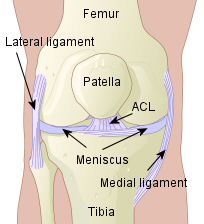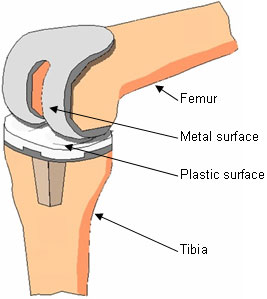Liza Minnelli to Undergo Knee Replacement
 Singer, dancer and all around diva, Liza Minnelli will be unable to attend this year’s Grammy Awards, as she is to undergo knee replacement surgery. The Cabaret star has a cast recording from her Tony-winning Broadway engagement, At The Palace, which is nominated for best traditional pop vocal album. According to Minnelli’s rep, years of dancing has finally taken it’s toll on the star: “Minnelli, who has been dancing on stage since she was a teenager, is 63 - she is expected to make a full recovery.”
Singer, dancer and all around diva, Liza Minnelli will be unable to attend this year’s Grammy Awards, as she is to undergo knee replacement surgery. The Cabaret star has a cast recording from her Tony-winning Broadway engagement, At The Palace, which is nominated for best traditional pop vocal album. According to Minnelli’s rep, years of dancing has finally taken it’s toll on the star: “Minnelli, who has been dancing on stage since she was a teenager, is 63 - she is expected to make a full recovery.”
About the Knee:
The knee joint is the largest joint in the body, consisting of 4 bones and an extensive network of ligaments and muscles.
The knee is made up of four main bones- the femur (thigh bone), the tibia (shin bone), fibula (outer shin bone) and patella (kneecap). The main movements of the knee joint occur between the femur, patella and tibia. Each are covered in cartilage which is an extremely hard, smooth substance designed to decrease the friction as movement occurs between the bones. The patella lies in an indentation at the lower end of the femur known as the intercondylar groove. At the outer surface of the tibia lies the fibula, a long thin bone that travels right down to the ankle joint.
Each knee joint has two crescent-shaped cartilage menisci. These lie on the medial (inner) and lateral (outer) edges of the upper surface of the tibia bone. They are essential components, acting as shock absorbers for the knee as well as allowing for correct weight distribution between the tibia and the femur.


Arthritis is the most common cause of damage to the knee that can lead to knee replacement. Arthritis can be caused by three things:
- Osteoarthritis- This occurs in people over 50. The cartilage that cushions the bones of the knee softens and wears away. Eventually, the bones rub against one another, causing knee pain and stiffness.
- Rheumatoid Arthritis- This is a chronic inflammatory disease. The lining of the knee joint, called the synovium, gets thickened and produces excess fluid, leading to swelling and joint stiffness. Chronic inflammation leads to damage to the cartilage.
- Traumatic Arthritis- Caused by a severe injury to the knee, such as a fracture or torn ligaments.
With total knee replacement, the surgeon removes damaged cartilage and bone from the surface of the knee joint and replaces them with a man-made surface of metal and plastic (see illustration above). In a partial knee replacement, the surgeon only replaces one part of the knee joint.
For more information:
 |
Resounding Health(tm) Knee replacement surgery |
![]()

